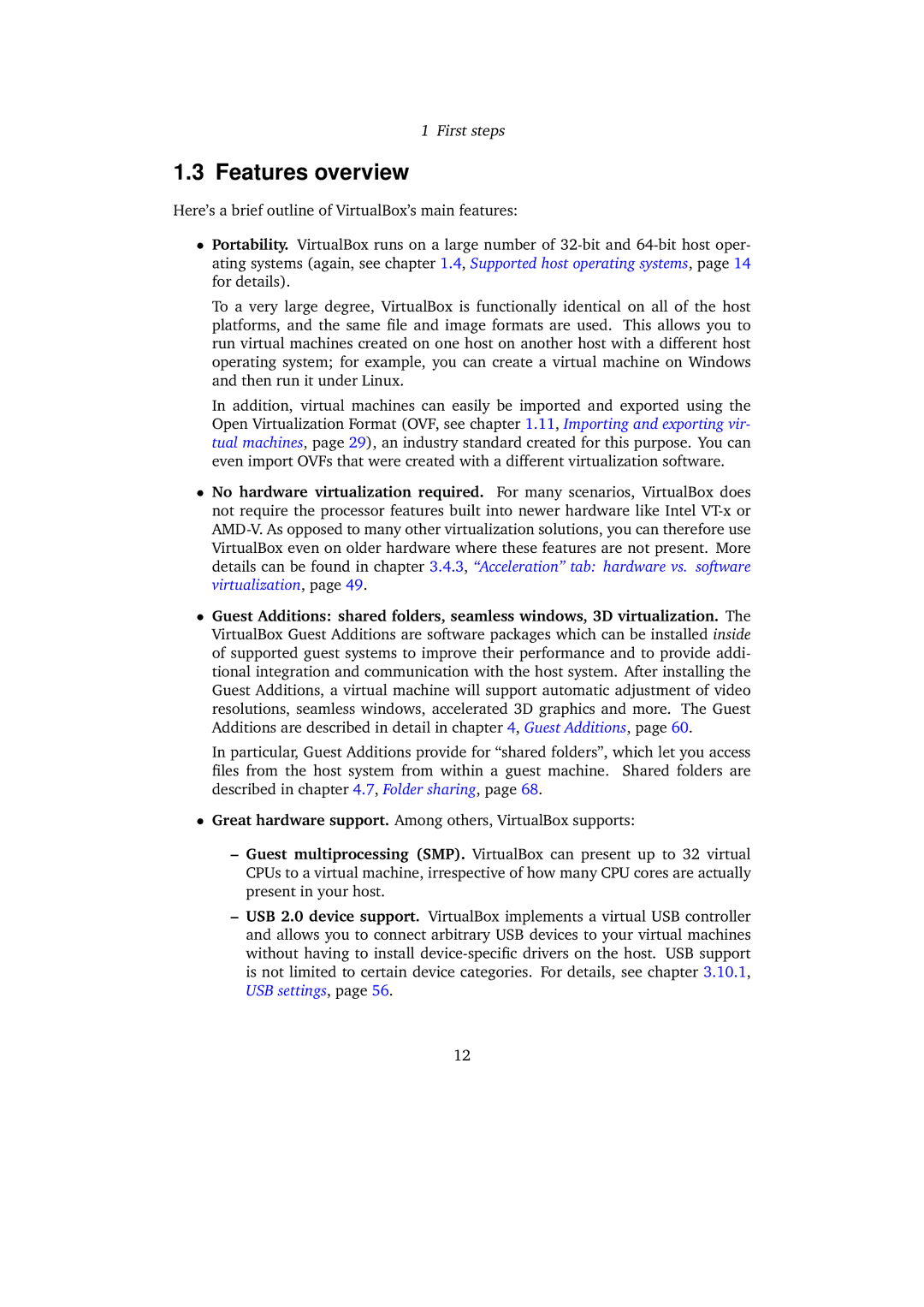1 First steps
1.3 Features overview
Here’s a brief outline of VirtualBox’s main features:
•Portability. VirtualBox runs on a large number of
To a very large degree, VirtualBox is functionally identical on all of the host platforms, and the same file and image formats are used. This allows you to run virtual machines created on one host on another host with a different host operating system; for example, you can create a virtual machine on Windows and then run it under Linux.
In addition, virtual machines can easily be imported and exported using the Open Virtualization Format (OVF, see chapter 1.11, Importing and exporting vir- tual machines, page 29), an industry standard created for this purpose. You can even import OVFs that were created with a different virtualization software.
•No hardware virtualization required. For many scenarios, VirtualBox does not require the processor features built into newer hardware like Intel
•Guest Additions: shared folders, seamless windows, 3D virtualization. The VirtualBox Guest Additions are software packages which can be installed inside of supported guest systems to improve their performance and to provide addi- tional integration and communication with the host system. After installing the Guest Additions, a virtual machine will support automatic adjustment of video resolutions, seamless windows, accelerated 3D graphics and more. The Guest Additions are described in detail in chapter 4, Guest Additions, page 60.
In particular, Guest Additions provide for “shared folders”, which let you access files from the host system from within a guest machine. Shared folders are described in chapter 4.7, Folder sharing, page 68.
•Great hardware support. Among others, VirtualBox supports:
–Guest multiprocessing (SMP). VirtualBox can present up to 32 virtual CPUs to a virtual machine, irrespective of how many CPU cores are actually present in your host.
–USB 2.0 device support. VirtualBox implements a virtual USB controller and allows you to connect arbitrary USB devices to your virtual machines without having to install
12
